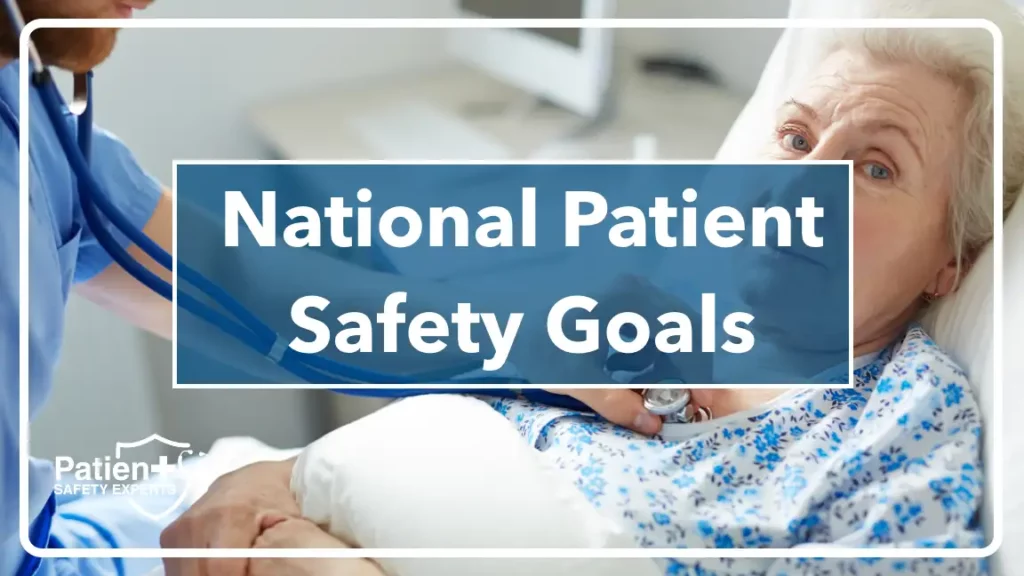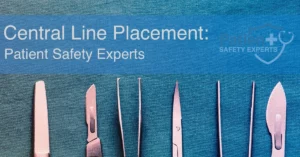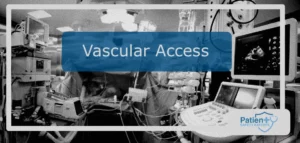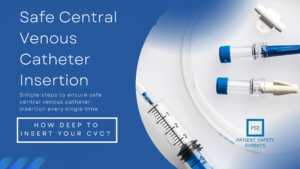In the ever-evolving healthcare landscape, patient safety remains the highest priority for healthcare organizations across the United States. The Joint Commission, in collaboration with the World Health Organization and the Centers for Disease Control and Prevention, has set forth a series of National Patient Safety Goals (NPSGs) for 2023. These goals aim to address specific patient safety issues, encompassing many healthcare settings, from hospitals and long-term care centers to home care and ambulatory healthcare settings.
The Purpose of the National Patient Safety Goals (NPSGs)
The NPSGs serve as a beacon of guidance for healthcare leaders, clinicians, and healthcare professionals. They provide strict guidelines and best practices to minimize patient safety risks and prevent medical errors. As you review this document you may notice skipped numbers that represent retired Goals (the numbers are not replaced)
The National Patient Safety Goals (NPSGs) change over time for several reasons:
- Evolving Medical Knowledge: As medical knowledge and best practices evolve, so do the NPSGs. New research, technologies, and treatment approaches may reveal previously unrecognized patient safety risks or provide more effective ways to address existing ones.
- Regulatory Updates: The NPSGs are often developed and updated by regulatory bodies such as The Joint Commission in the United States. These organizations periodically review and revise the goals to align with changing healthcare standards and regulations.
- Feedback and Learning: Healthcare providers and organizations continually gather feedback and learn from their experiences. Incidents, near-misses, and adverse events can inform changes to the NPSGs, helping to prevent similar incidents in the future.
- Patient Input: Patient advocacy and input play a significant role in shaping healthcare policy. The NPSGs may change to incorporate patient perspectives and address their concerns about safety and quality of care.
- Technology Advances: Advancements in healthcare technology, such as electronic health records and medical devices, can introduce new safety challenges. Updating the NPSGs helps ensure that safety measures keep pace with technological changes.
- National and Global Events: Events like pandemics, natural disasters, or emerging infectious diseases can spotlight specific patient safety concerns that may not have been as prominent in the past, prompting updates to the NPSGs to address these issues.
- Benchmarking and Data Analysis: Analyzing healthcare data and benchmarking against best practices allows organizations to identify areas where patient safety improvements are needed. This data-driven approach can lead to changes in the NPSGs.
- Healthcare System Changes: Changes in the structure and delivery of healthcare, such as the shift toward value-based care or changes in care settings (e.g., telemedicine), can impact patient safety requirements and necessitate updates to the NPSGs.
Overall, the NPSGs are dynamic and adaptable to ensure that they remain relevant and effective in promoting patient safety in an ever-changing healthcare landscape. Regular updates help healthcare organizations stay vigilant and proactive in their efforts to prevent medical errors and enhance patient outcomes.
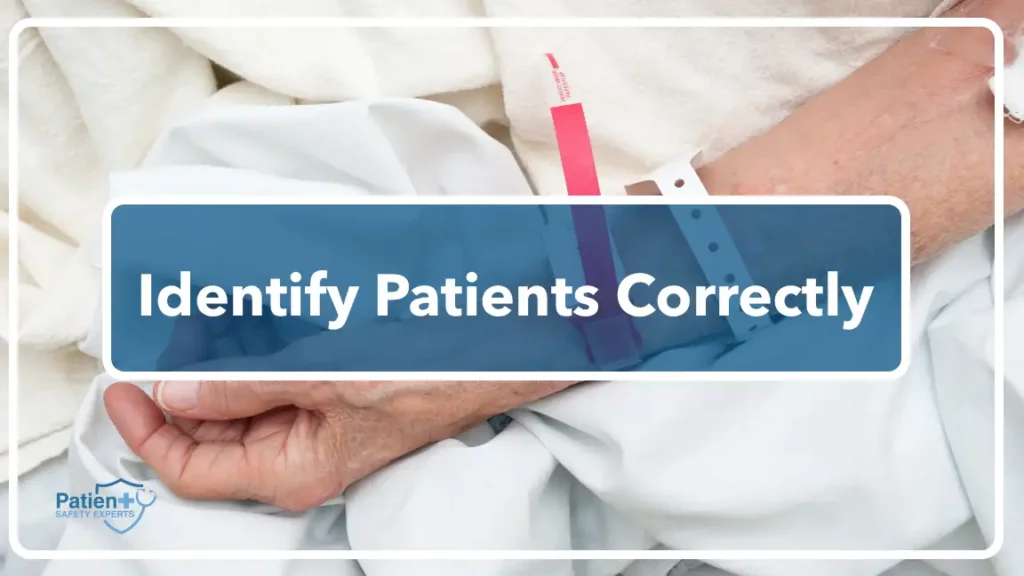
Goal 1: Ensuring Accurate Patient Identification
- Patient identification is the cornerstone of patient safety. To prevent wrong-site surgery or medication errors, healthcare organizations must use at least two patient identifiers, such as the patient’s name and date of birth.
- Implementing standardized processes for verifying patient identity is critical, ensuring that medications, medical equipment, and procedures are directed to the correct patient.
Elements of Performance for this goal for Hospitals are:
- Use at least two patient identifiers when providing treatments or procedures. See details of these at the Joint Commission.
- Label containers used for blood and specimens with the patient present. Consider engaging the patient in confirming the information on the label for the specimen where possible.
- Newborns are at higher risk for misidentification. It is vital to use distinct methods of identification for newborns.
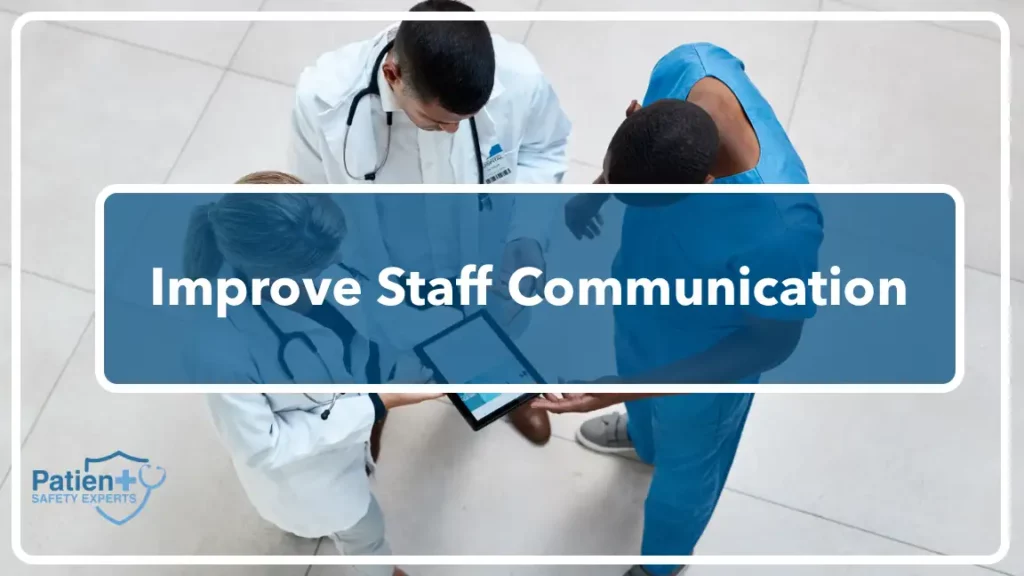
Goal 2: Improving Effective Communication
- Effective communication among healthcare professionals is vital for safe patient care. The NPSGs emphasize standardized handoff procedures to prevent misunderstandings and errors during care transitions.
- Clear and open communication channels facilitate the timely sharing of important test results and patient information.
Elements of Performance for this goal for Hospitals are:
- Create documented procedures outlining the handling of critical test and diagnostic results, including definitions, reporting responsibilities, and acceptable reporting timeframes.
- Implement the procedures you have created
- Evaluate the timeliness of your reporting of critical results and tests.
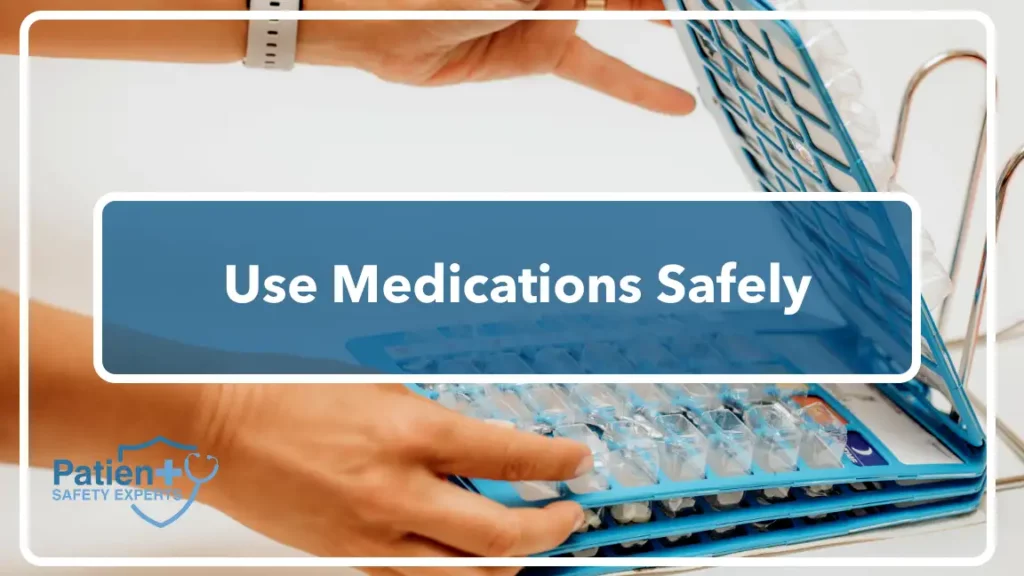
Goal 3: Ensuring Safe Medication Use
- Medication errors are a significant concern. The NPSGs require healthcare organizations to label medicines accurately, maintain up-to-date lists of patient medications, and educate healthcare professionals to use medicines in the correct place and for the correct patient.
- These practices help reduce the risk of administering the wrong medicine to a patient.
- Consists of three parts, NPSG.03.04.01, NPSG.03.05.01, and NPSG.03.06.01.
National Patient Safety Goal #03.04.01 emphasizes the importance of labeling all medications, medication containers, and solutions both on and off the sterile field in perioperative and procedural settings.
The rationale behind this goal is that unlabeled medications and solutions pose significant risks as they can lead to errors and adverse events when removed from their original containers. Labeling helps identify these substances, reducing the risk of harm. The requirements for this goal include labeling medications not immediately administered, labeling when transferring from original packaging to another container, and ensuring labels contain essential information such as medication name, strength, amount, diluent details, and expiration date or time.
National Patient Safety Goal #3.05.01 addresses the reduction of patient harm associated with anticoagulant therapy.
This goal recognizes that anticoagulants are prone to causing harm due to complex dosing, insufficient monitoring, and inconsistent patient compliance. It requires hospitals to use approved protocols and evidence-based guidelines for anticoagulant reversal, perioperative management, and the use of specific medication products. The goal aims to enhance the safety of patients receiving anticoagulant therapy.
National Patient Safety Goal #3.06.01 focuses on maintaining and communicating accurate patient medication information.
This goal acknowledges that medication discrepancies can affect patient outcomes and emphasizes the importance of medication reconciliation. It requires healthcare organizations to obtain and document a comprehensive list of the medications a patient is currently taking upon admission or outpatient visits. This list should include medication names, doses, routes, frequencies, and purposes. Discrepancies between the patient’s medication list and the medications ordered by the hospital should be identified and resolved. Patients should also receive written information about their medications upon discharge, along with instructions on managing medication information. This goal aims to reduce errors related to medication discrepancies and improve patient safety during transitions in care.
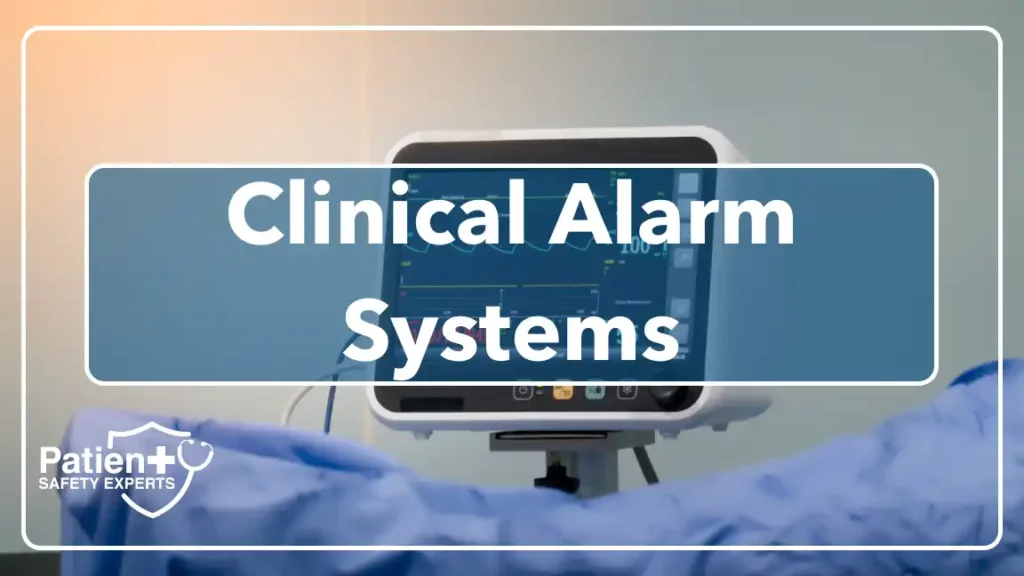
Goal 6: Reducing Harm Associated with Clinical Alarms
National Patient Safety Goal #6, “Reducing Patient Harm Associated with Clinical Alarm Systems,” focuses on improving patient safety by addressing the risks associated with clinical alarm systems in healthcare settings. Clinical alarm systems are essential for alerting healthcare providers to various patient conditions, such as changes in vital signs, device malfunctions, or potential safety issues. However, when not properly managed, alarm systems can lead to alarm fatigue and contribute to patient harm.
Here’s an explanation of the key aspects of this goal:
- Purpose: The goal aims to minimize the harm caused to patients due to clinical alarms. Alarm fatigue occurs when healthcare providers become desensitized to the sheer volume of alarms, leading to missed or delayed responses. This can compromise patient safety.
- Requirements and Objectives:
- Alarm Management: Healthcare organizations are required to establish alarm management processes that prioritize alarms, set appropriate alarm parameters, and ensure alarms are actionable and relevant.
- Education and Training: Staff should receive education and training on the proper use and response to alarms.
- Clinical Alarms: Hospitals need to identify which alarm signals require individual attention, as well as specify how often these alarms should be evaluated.
- Response Teams: Hospitals must establish alarm response teams with clear roles and responsibilities to address alarms promptly.
- Benefits: By reducing alarm fatigue and improving the management of clinical alarms, this goal helps healthcare providers respond more effectively to alarms that indicate genuine patient problems. It enhances patient safety by minimizing the risk of missing critical alarms or responding inadequately.
- Challenges: Implementing this goal can be challenging because it requires balancing the need for alarm alerts with preventing excessive, non-actionable alarms. Healthcare organizations must invest in staff training, develop clear alarm protocols, and adopt technology solutions to achieve these goals.
- Impact on Patient Safety: Addressing alarm fatigue and improving clinical alarm systems can have a significant positive impact on patient safety. It reduces the risk of adverse events, prevents unnecessary stress on healthcare providers, and ensures that critical alarms receive the attention they deserve.
In summary, National Patient Safety Goal #6 emphasizes the importance of effective clinical alarm management to prevent alarm fatigue and reduce patient harm associated with alarm-related errors. By implementing strategies to optimize alarm systems, healthcare organizations can enhance patient safety and the overall quality of care.
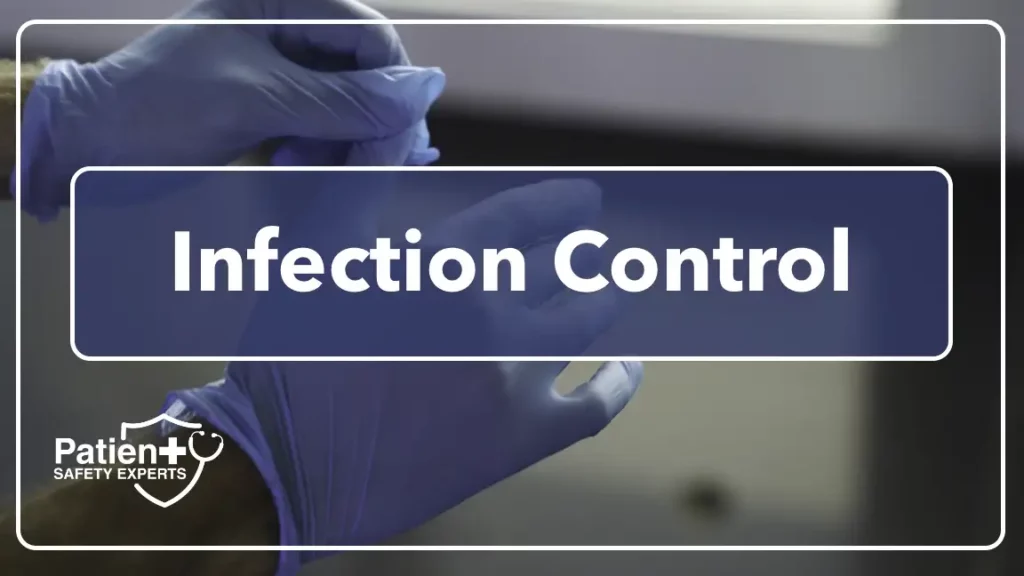
Goal 7: Reduce the Risk of Infections in Healthcare Settings
- Infection control is a universal protocol. The NPSGs emphasize the importance of hand hygiene guidelines and the use of products, such as clinical alarm systems, to reduce the spread of infections.
- Healthcare facilities must also conduct environmental risk assessments for patient care.
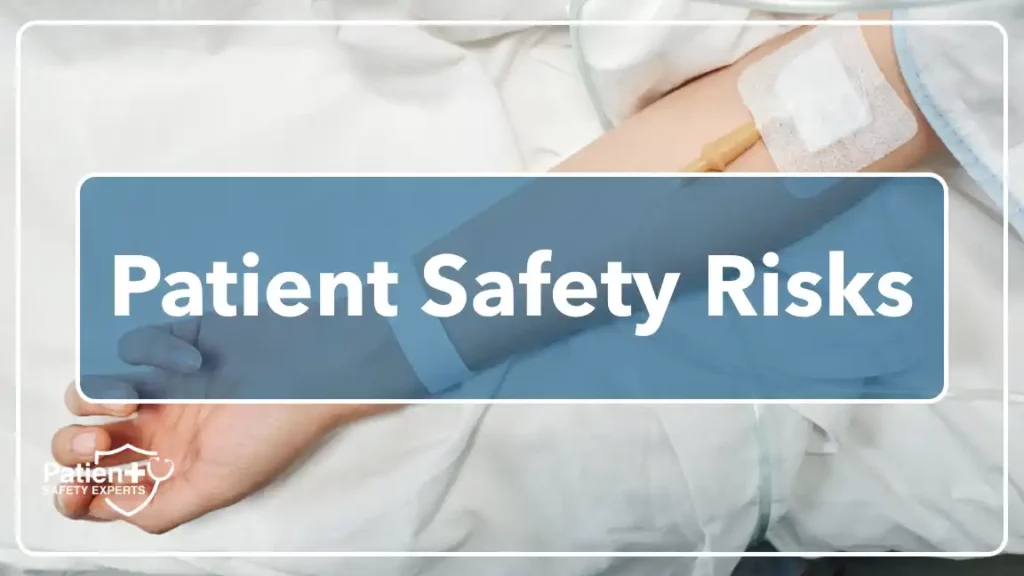
Goal 15: Identify Patient Safety Risks
National Patient Safety Goal (NPSG) #15.01.01 is aimed at reducing the risk of suicide among patients, particularly those in psychiatric hospitals or those being evaluated or treated for behavioral health conditions as their primary reason for care. This goal acknowledges that suicide is a sentinel event that can occur in healthcare settings and emphasizes the importance of identifying individuals at risk for suicide.
Key points regarding NPSG #15.01.01 are as follows:
- Environmental Risk Assessment: For psychiatric hospitals and psychiatric units in general hospitals, the hospital must conduct an environmental risk assessment to identify features in the physical environment that could be used for suicide attempts. Necessary actions, such as removing anchor points and objects that pose a risk, must be taken to minimize these risks. Nonpsychiatric units in general hospitals should also implement procedures to mitigate suicide risk for high-risk patients, even if they do not need to be ligature-resistant.
- Screening for Suicidal Ideation: All patients being evaluated or treated for behavioral health conditions as their primary reason for care must be screened for suicidal ideation using a validated screening tool. The screening requirement applies to patients aged 12 and above.
- Suicide Assessment: Patients who screen positive for suicidal ideation should undergo a comprehensive suicide assessment using an evidence-based process. This assessment should cover various aspects, including ideation, plans, intent, self-harm behaviors, risk factors, and protective factors. The severity of suicidal ideation should be assessed as well.
- Documentation: The hospital must document the patient’s overall level of risk for suicide and the plan to mitigate this risk.
- Written Policies and Procedures: The hospital should have written policies and procedures in place for the care of patients identified as at risk for suicide. These policies should encompass staff training and competence assessment, guidelines for reassessment, and the monitoring of high-risk patients.
- Counseling and Follow-Up Care: Written policies and procedures should also address counseling and follow-up care for patients identified as at risk for suicide at the time of discharge.
- Monitoring and Improvement: The hospital is required to monitor the implementation and effectiveness of its policies and procedures for screening, assessment, and management of patients at risk for suicide. Any necessary actions should be taken to enhance compliance and improve patient safety.
Overall, NPSG #15.01.01 underscores the critical need to identify and address suicide risk within healthcare settings, particularly for patients with behavioral health conditions. It outlines specific measures to ensure the safety of these patients and reduce the risk of suicide-related events.

Goal 16: Promoting Health Equity
Achieving healthcare equity is central to patient safety. The NPSGs highlight the importance of equity in healthcare delivery, regardless of the healthcare system or setting.
By addressing health equity, healthcare organizations aim to provide extra care to underserved patient populations.
The hospital commits to advancing healthcare equity through several key steps.
- It designates individuals to lead equity improvement efforts, who may have this as a primary role or part of broader responsibilities.
- It assesses patients’ health-related social needs and provides information on relevant community resources.
- It identifies healthcare disparities by analyzing quality and safety data based on sociodemographic characteristics.
After identifying disparities, the hospital creates a written action plan to address at least one identified disparity and takes action if goals are not met.
Lastly, the hospital keeps key stakeholders informed about its progress toward healthcare equity improvements on an annual basis.
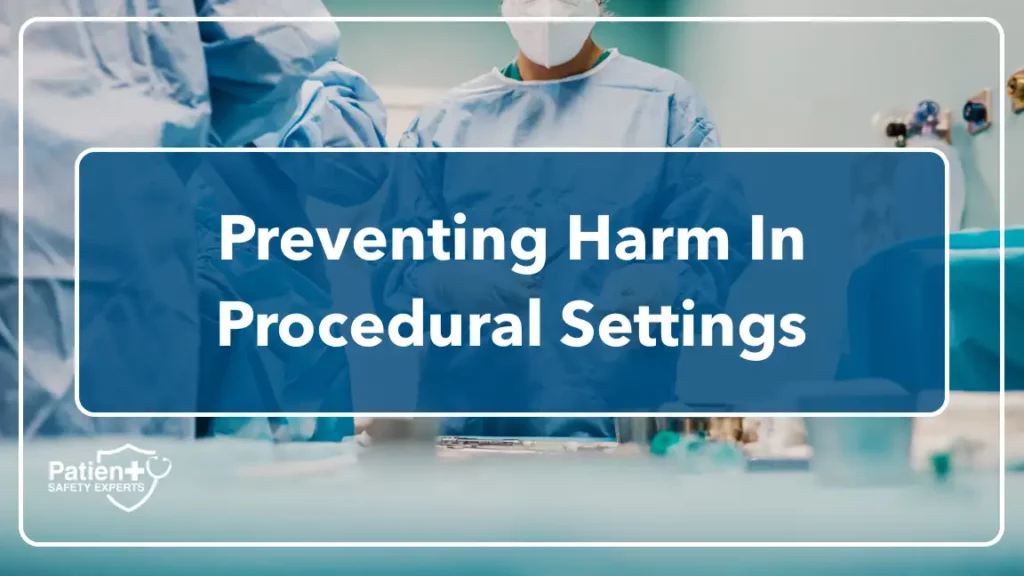
Universal Protocol: Preventing Patient Harm in Procedural Settings
- Strict adherence to the Universal Protocol is crucial in ensuring that diagnostic procedures and surgeries are conducted in the correct patient and the correct surgery.
- Procedural settings, including office-based surgery settings, present specific areas of patient safety concern. Adhering to the NPSGs, healthcare professionals can prevent wrong procedures and enhance the accuracy of patient identification.
- To learn more, see our comprehensive post on Universal Protocol.
The Role of NPSGs in Healthcare
In summary, the National Patient Safety Goals for 2023, set forth by The Joint Commission, encompass a broad spectrum of patient safety issues in various healthcare settings. They are not only a set of standards but also a testament to the commitment of healthcare leaders to continually improve patient outcomes.
Healthcare organizations must integrate these goals into their continuum of care, from initial patient identification to ongoing patient care and communication. By doing so, they can provide accurate and safe patient care while mitigating the risks associated with medical errors.
As healthcare leaders and risk managers, it is essential to stay updated on the current National Patient Safety Goals and actively promote a culture of safety within healthcare facilities. The NPSGs are not merely guidelines; they are the foundation upon which healthcare organizations can build a safer and more equitable healthcare system.
Please note that this article is intended for informational purposes only and does not constitute medical or legal advice.
References:
